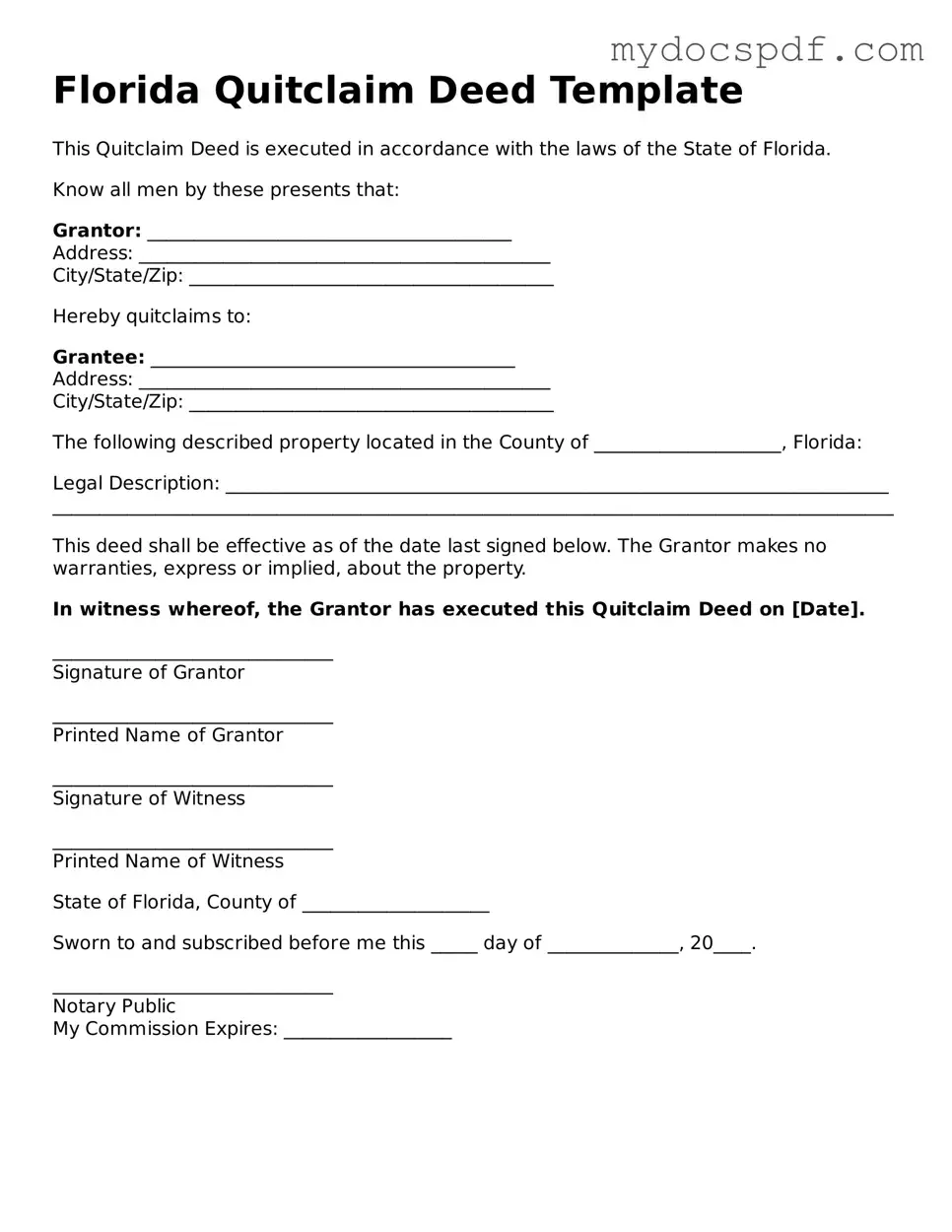Florida Quitclaim Deed Template
This Quitclaim Deed is executed in accordance with the laws of the State of Florida.
Know all men by these presents that:
Grantor: _______________________________________
Address: ____________________________________________
City/State/Zip: _______________________________________
Hereby quitclaims to:
Grantee: _______________________________________
Address: ____________________________________________
City/State/Zip: _______________________________________
The following described property located in the County of ____________________, Florida:
Legal Description: _______________________________________________________________________
__________________________________________________________________________________________
This deed shall be effective as of the date last signed below. The Grantor makes no warranties, express or implied, about the property.
In witness whereof, the Grantor has executed this Quitclaim Deed on [Date].
______________________________
Signature of Grantor
______________________________
Printed Name of Grantor
______________________________
Signature of Witness
______________________________
Printed Name of Witness
State of Florida, County of ____________________
Sworn to and subscribed before me this _____ day of ______________, 20____.
______________________________
Notary Public
My Commission Expires: __________________
